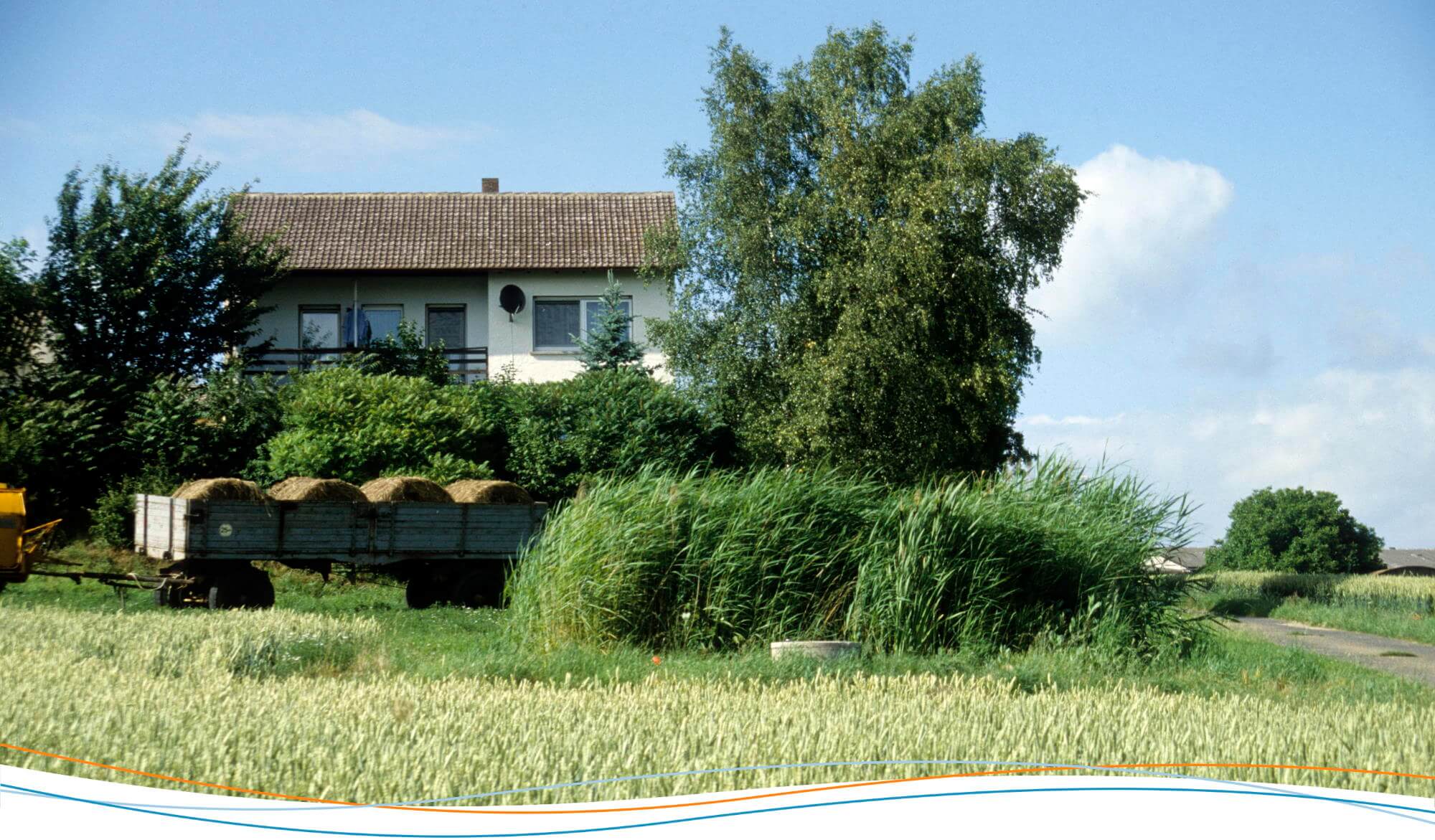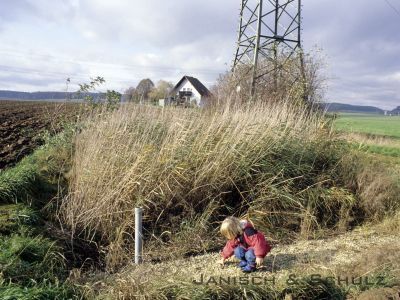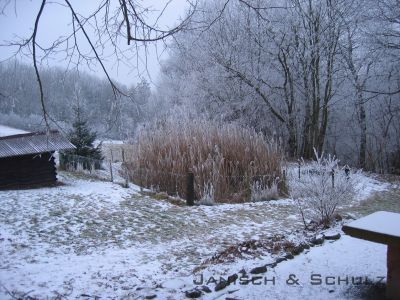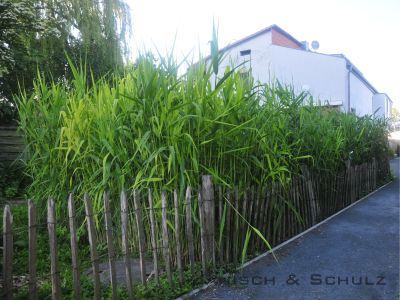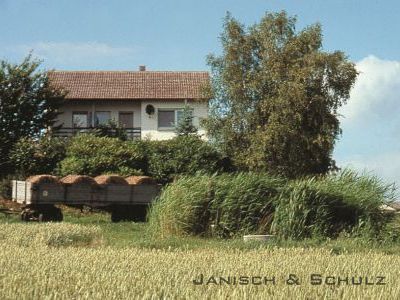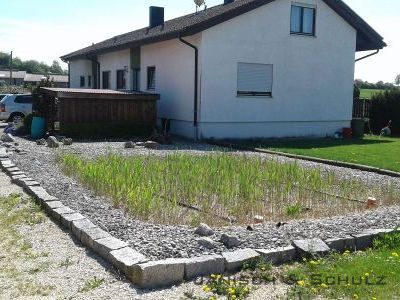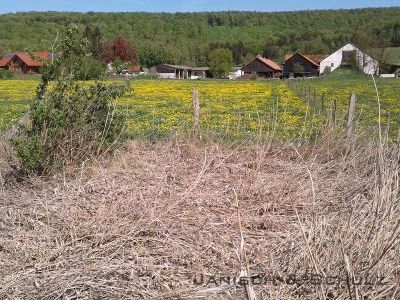Constructed wetlands as a small sewage treatment plant
We built our first constructed wetland in 1993. The horizontal flow plant operates without electricity and is still in trouble-free operation today:
Please come back later again for English subtitles.
The water law permit
For the treatment of domestic wastewater, constructed wetlands are legally classified as small wastewater treatment plants according to DIN EN 12566 up to a connection size of 53 inhabitants or 8,000 l of wastewater per day. For the construction of a small wastewater treatment plant, exemption from the municipal connection and use obligation is always required, as well as a water law permit for the discharge of treated wastewater into a receiving water body or into the subsoil (infiltration). The application documents for the approval procedure are prepared by us.
The approval of a technical small wastewater treatment plant is always based on a general building inspection approval. Near-natural wastewater treatment plants are usually individually planned plants that are approved on the basis of the current state of the art. For our industry, this is defined in the DWA worksheet A 262 “Principles for the design, construction and operation of wastewater treatment plants with planted and unplanted filters for the treatment of domestic and municipal wastewater” from November 2017.
A brief critical outline of this set of rules can be found here: Every industry has its own set of rules!
Approval by the building authorities
Our constructed wetland was installed in October 2009 at the test facility of the Materials Research and Testing Institute (MFPA) of the Technical University of Weimar. It has successfully gone through the process of type approval there. The German Institute for Construction Technology has issued the following approval numbers:
• Drainage class N Z-55.4.-309
• Drainage class C Z-55.4.-310
• Drainage class N+H Z-55.4.-311
Since these approvals are still based on the old rules and regulations, which presuppose an oversized pre-treatment volume, we generally plan our plants on the basis of the current DWA-A 262 and guarantee the purification targets specified in the respective effluent classes.
You get: 5 years warranty on the required discharge values!
Since the range of application of constructed wetlands goes far beyond the standard framework of small wastewater treatment plants, individual dimensioning approaches are often necessary in our daily practice. After several years of operation, the soil filter forms a complex ecosystem of root space, microorganisms and plant cover. In every climate zone, even in every region with different site conditions, the system behaves somewhat differently. When planning and designing, we therefore rely first and foremost on our many years of experience, and only in the second step do we look up the relevant regulations.
Constructed wetlands are walkable. No open water surfaces are formed. Contact with wastewater is excluded.
The planted soil filter cleans the wastewater even in deep winter, although the reed has died on the surface.
A reed bed treatment plant can also be built close to the residential house. There is no odor nuisance.
Powerless and trouble-free. The Bender family’s constructed wetland has been in operation in Gambach, Hesse, since 1993.
Each industry has its own set of rules!
Rules and regulations define the state of the art and every planner needs good arguments should he violate these rules, because if it comes to a dispute in court, every expert will nail you on the basis of the rules and regulations.
Therefore, even in the case of excessive specifications, in most cases planning is done as prescribed by the current regulations. The following is an example from our field: Worksheet DWA-A 262 regulates the construction of constructed wetlands. It has now been published in its third version and shows significant differences in all versions with regard to the required pre-treatment volumes.
| plant size | 4 PE | 10 PE | 20 PE | 50 PE |
| ATV-A 262 Edition July 1998 | 3,000 liters | 6,000 liters | 9,000 liters | 26,000 liters |
| DWA-A 262 Edition March 2006 | 6,000 liters | 12,000 liters | 16,500 liters | 31,500 liters |
| DWA-A 262 Edition Nov. 2017 | 3,000 liters | 3,000 liters | 6,000 liters | 15,000 liters |
The realization that a septic tank with a volume of 3,000 liters is sufficient for a small plant was already with us in 1993, when there were no rulebooks for constructed wetlands. With the first worksheet in 1998, the specified volumes were more or less those with which we had also had good experience. In 2006, another edition was published with required pre-treatment volumes that were in some cases twice as large as originally. This was a huge deal for the pit manufacturers, and constructed wetlands became much more expensive as a result.
The technical competition was pleased because they could continue to build with small volumes. Not all approval authorities went along with the nonsense; we were able to convince many in Hesse, Baden-Württemberg and Rhineland-Palatinate to stick with the proven smaller volumes. In 2017, the regulations were revised – now similar small volumes as in 1998 can be used again.
Maintenance of constructed wetlands
Owners of a small wastewater treatment plant do not pay wastewater tax, but they are obliged to prove the function of the plant regularly to the water authority. We are certified for this maintenance work and can offer you a maintenance contract including the wastewater analyses.
After more than 25 years of operating experience with constructed wetlands, we claim: There is no comparable system that fulfills its task so reliably and enduringly with such low operating and maintenance costs.
In order to maintain the function of the plant in the long term, the plant should be regularly checked and maintained by the operator. The maintenance is limited to the removal of foreign growth and the dead reed straw. In addition to the self-inspection, we recommend a one-time maintenance by us every year. During the maintenance, we check the function of the plant feed, we determine the level of sludge in the primary clarifier and we take a wastewater sample. We summarize the results and recommendations in a maintenance report.
A single maintenance per calendar year is sufficient for our systems. In some federal states and counties, however, small wastewater treatment plants must be serviced twice a year. This regulation is justified for technical plants, because if the technology fails there, the wastewater runs untreated into the environment.
According to the motto every branch has its own certificate, we were also obliged to be certified for the maintenance of small sewage treatment plants. Now we send our employees to regular trainings and as a certified maintenance company we can offer you the maintenance of natural or technical small sewage treatment plants.
We will be happy to provide you with a non-binding offer for the maintenance of your small wastewater treatment plant!
Maintained: In time for spring, remove dead plant material and collect emerging woody seedlings.
Unkempt: Once the elder has taken root, it can only be pulled out with heavy equipment.

